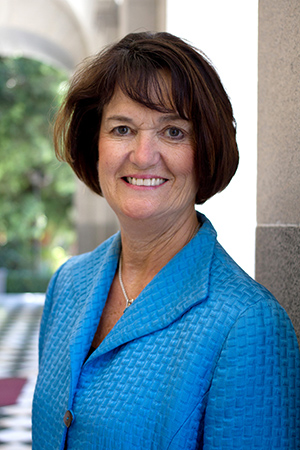by Joanne Handy, Immediate Past President and CEO of LeadingAge California
Early in my career as a provider, my boss sent me to a Policy Committee of the state provider association. I had a clinical background and was in my first supervisory position, so I had no idea why she wanted me to go to a “policy” meeting. As I listened to the committee discussion, I quickly realized that the members were crafting strategies to improve state regulations that directly affected my role. My head moved out of the sand just a bit.
These two early exposures were followed by many similar experiences, as I followed a path that would bring me from a direct clinical role to CEO positions. Involvement in associations had a profound impact on my career development. Kay Kallander’s article on the EMERGE Leadership Program in this issue is one stellar example of an association program. However, there are so many more! These examples expanded my understanding of the importance of policy and how to impact it to achieve change on an industry level, not just on an individual level. My leadership skills developed as I assumed committee roles, presented to government officials, and developed education sessions. I was exposed to seasoned leaders from other providers who served as role models for me and urged me to “step up” in various association roles. I formed networks of colleagues from other provider organizations who shared best practices and problem-solving among us, assisting me to be more effective back at my home base. Many of these people became career-long colleagues and friends, a standby “kitchen cabinet” with whom to consult and learn. My view of career opportunities was now above the sand!
Several years later, I became the Board President and Chair of that first association, at the time the only non-CEO ever elected. Serving on a Board provided another amazing opportunity for career development, propelling me into leadership in national associations. In general, Board members of associations are considered leaders in their field. Connecting with such leaders through Board service gives one access to thought leadership and expert support. It is a broadening experience in which you stay on top of trends in the field, improving your leadership with your teams. Then, there are all those leadership skills you practice on the Board, such as team building, decision-making, building consensus, articulating your case, listening to others, and setting strategic direction.
LeadingAge California is well known for its unique camaraderie among its members and its leaders, making it an inviting environment for participation. More importantly, LeadingAge is attuned to look for new talent on its committees and in its conferences and supports emerging leadership through EMERGE. The regions often serve as the incubator for cultivating new talent.
This article, then, is a “shout out” to the ways associations contribute to career development. It is also a soft manifesto for aging services executives to encourage and support their promising leaders to be active participants in associations. Having sat around many LeadingAge California Board tables, I observed countless examples of early career professionals rising through the association ranks to take their rightful seats at that table.


 A few months later, the same boss sent me to a meeting with regional Medicare and insurance officials, convened by the state association. They asked me to present an education session on wound care, so they could better understand how to evaluate claims for reimbursement. My head popped even higher out of the sand.
A few months later, the same boss sent me to a meeting with regional Medicare and insurance officials, convened by the state association. They asked me to present an education session on wound care, so they could better understand how to evaluate claims for reimbursement. My head popped even higher out of the sand.

